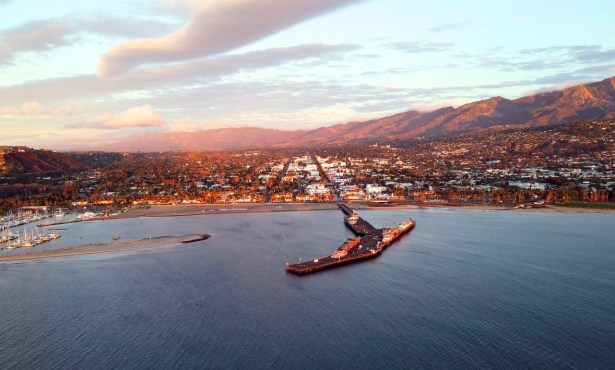Regional Rules
The Social Dimension to Biodiversity Loss
In response to my last column, there were a number of interesting comments that focused on the fear of lost maritime culture, the politics of protecting ecosystems, the need to strengthen our local economy by improving the connection between our consumption of food and local food producers, and the importance of local farmers and fishers to our region. This week’s article builds on this discussion, in the hope that readers will engage in a polite and open exchange. We need this type of public forum in our region.
We should be concerned about the effects of climate disturbance. In particular, the loss of biodiversity should be addressed because of two major consequences: the loss of biodiversity contributes to loss of cultural diversity and to the rise of ecological insecurities — associated with the impacts of drought and fire, a dwindling of clean water sources, and declines in food production. In an article published in the Proceedings of the National Academy of Science in 2006 Dr. James Hansen and colleagues conclude their analysis of global warming by noting that a warming of more than 1° C, relative to the year 2000, will constitute dangerous climate change as judged from such likely effects as the extermination of species.

The sixth mass extinction of plants and animals is likely underway — nearly 50 percent of all species could disappear within the lifetimes of people now living on Earth. Estimates of the scale of biodiversity loss vary in accordance to the types of models scientists use. But there a growing amount of concern that the current and potential future loss of species is unusual with respect to the historical record and evolution. The last mass extinction took place 65 million years ago during the Cretaceous Tertiary extinction event.
The most comprehensive assessment of the world’s mammals confirms an extinction crisis, with almost one in four at risk of disappearing, according to the International Union for the Conservation of Nature (IUCN) Red List of Threatened Species and as described in the proceedings of the IUCN World Conservation Congress in October 2008. The study to assess the world’s mammals shows that at least 1,141 of the 5,487 mammals on Earth are known to be threatened with extinction. One in four marine mammals may go extinct.
While government elites “define the problem” of climate disturbance in terms of energy production and fossil fuel consumption and, at best, propose a reduction in greenhouse gas emissions, the fact is that even significant emissions cuts of greenhouse gases will not bring quick relief from the myriad pressures associated with ecological insecurities — notably the large-scale consequences that result from a significant decline in the availability of protein sources from the sea, the loss of carbohydrates (cereals, corn, wheat, rice), and drought. Ecological insecurity is a result of the decline in the types of ecosystem goods (timber) and services (nutrient cycling, oxygen production, the storage of water and carbon along a healthy creek’s bank) that we depend on for survival.
You may be a skeptic: You may not believe that the climate is changing or you may believe that human beings are not the primary factor contributing to this change. But skeptics should nevertheless be aware of the dramatic loss of biodiversity that may be a consequence of our level of resource consumption. We live in a world of pending resource scarcity. You might not be overly concerned about the loss of species; you may feel that the extinction and extirpation (local extinction) of species are not important human concerns since species have long been lost throughout time. Or you might not believe that we are the reason for the decline of species. But I would encourage skeptics to adopt a more precautionary approach to these challenges. The risks are high, and these risks will get higher across future generations.
Human history and evolution has been based on our shared capacity to adapt and our capability to respond to and learn from environmental change. This is not just an issue for scientists or engineers. Change in our behavior is based on the values we hold and the intuition that we cultivate about the places we inhabit. A subtle change in the wind, in the amount of rain, in our springtimes are being recognized by the farmers, ranchers, and fishers who have lived here for a long time. We should act with precaution, with the hope that we can become more culturally resilient to changes that are well beyond our control and understanding.
History shows that there are likely social impacts from change in the climate and in such environmental conditions as the availability of food and water. Cultural impacts of environmental change include mass migration, diseases, epidemics, violence, revolution, war, and (interesting to note) colonization. The rise of the imperial Ming Dynasty, for instance, was based in part on control of water and food availability across diverse regions.
Biodiversity is an important factor contributing to ecosystem services. Biodiversity protection should be a priority concern whether or not you believe in climate change. It is not just a scientific or technical issue. Values matter.
What can we do to begin to confront these challenges? We can turn to our own region as a place to make a change. We don’t need to continue to turn to the federal government or international organizations to change our local behavior and associated impacts. I propose the following principles for further discussion and comment:
• Restoring the relationship between a place and the mode of production and consumption;
• Protecting rural lands and local agriculture;
• Establishing biodiversity and resource-use policies that also support the values of intergenerational equity and environmental justice;
• Strengthening regional markets for regionally produced goods;
• Creating value-added programs for sustainably produced resources;
• Developing regional fishery trusts and cooperatives that promote regional markets for local fisheries;
• Assessing and monitoring economic strategies that shed light on how coastal marine ecosystems sustain vibrant, equitable, and economically diverse human activities;
• Fostering new cooperative, interjurisdictional, cross-boundary conservation partnerships that can cultivate the necessary place-based social and economic alliances, with potential new roles for government and nongovernment groups; and,
• Establishing a local carbon tax and a local carbon-tax credit.
Most of these recommendations are nongovernmental. But there should be a role of government to offer incentives and support for these types of activities. With respect to this last point, we could begin to pay farmers and ranchers to protect and restore much-needed riparian areas across our county — or what I refer to as the development of a “riparian trust.” Currently, most species that are listed as threatened or endangered depend on riparian areas and other aquatic habitats during some part of their life cycles. But we’ve lost a significant of riparian habitat across the state. A riparian trust is one tool that can be developed in order to strengthen and improve existing biodiversity conservation efforts across diverse landscapes in Santa Barbara County. Such a trust could include payments for ecosystem services (PES) in the agricultural sector, for instance. With respect to biodiversity values, a riparian trust could strengthen bird protection, agricultural buffer areas from urban activities, carbon intake, microclimate regulation, and enhanced pasture production on ranch lands.


